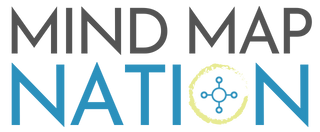What’s Your Life Blueprint?
In a world filled with infinite possibilities, it's easy to feel overwhelmed by the choices we have to make and the paths we can take. I've previously explored the power of 2-Week Sprints to kickstart our journeys and tackle our dreams head-on.
While these Sprints provide an effective approach to goal-setting and execution, in the grand scheme of our lives, they're simply small building blocks amongst many.
Blogger Tim Urban demonstrates this in his post Your Life in Weeks with several illustrations:
"This is a long human life in years:
And here’s a human life in months:
But today, we’re going to look at a human life in weeks:
Each row of weeks makes up one year. That’s how many weeks it takes to turn a newborn into a 90-year-old.
Let’s look at how a typical American spends their weeks:
Both the week chart above and the life calendar are a reminder to me that this grid of empty boxes staring me in the face is mine. We tend to feel locked into whatever life we’re living, but this pallet of empty boxes can be absolutely whatever we want it to be. Everyone you know, everyone you admire, every hero in history—they did it all with that same grid of empty boxes."
I love this concept of "empty boxes" as it represents endless opportunities. Yet it also feels somewhat like starring at a blank page. It's makes me nervous as to what to write about, how to go about it, or if I'll even enjoy the journey part way.
There I go again, projecting the future into the present.
Possibilities and chaos are two sides of the same coin. That's why it's sometimes helpful to have some structure as we begin filling our empty boxes.
Mind Maps have always been the bridge between chaos and order. I've come up with several techniques to help organize our intentions, goals, and actions across our most common timeframes:
Today I'll cover the Lifetime tools, but if you're interested in how I do my medium-term (i.e. annual and quarterly) planning, here are some resources:
Alright, let's get on with those BIG maps.
Life Road Map
My favorite Big Picture tool is the Life Road Map (aka the Bucket List Map), which you can find the video tutorial for here.
Here's the description:
"Every big personal goal should begin with the question: who do you want to be? In between that answer and where we are today stands a journey and a process.This exercise will challenge you to create a visual road (mind) map to get there. You’ll clarify your intentions, determine where your “why” comes from, and break down your big ambitious goals into smaller actionable steps.
This mind map starts with 5-year long term goals, which are broken down into 1-year medium term goals and 3-month short term goals. The further away a node is from the center, the more short term and immediately actionable the goal is."
Sounds like the bigger brother of the Sprint Map, doesn't it? That's because it uses the same concept of deconstruction, which lies at the heart of every mind map. Maps are powerful precisely because they can break down any topic, no matter how complex, into simpler parts, while retaining their connection to the whole picture.
Here's how I'd break down my "Lifetime goals" of becoming an Ironman triathlete and YouTuber with 1M subscribers. Note that the red text towards the center of each major node. That's my "why" and it's purposefully close to the center of the map.
But what if you don't know exactly who you want to be? Or unsatisfied with your current state and at crossroads in life?
Empowering Mind Maps
Last winter, I launched a series of Empowering Mind Maps as part of a MMN Course that asked the fundamental question of:
"When was the last time you seriously asked yourself where you want to take your life?"
The mind maps centered around the following questions, which spans 10 daily mind maps designed to facilitate self inquiry.
This is one of the 10 Empowering Mind Maps called the Impact Map. These exercises are challenging but will bring deeper clarity to all your goals.
Interestingly, while we had the majority of our community participate, only a tiny handful actually completed the Course: 8% to be exact.
Our Retrospective event was revealing:
"They’re tough but effective! Each of these maps is deeply personal and difficult to complete even one. But if you take the time and effort, you will be rewarded with valuable insights that will have outsized impact on your life.
This is because these maps surface underlying motivational and aversion drivers and reveal single points of where you can change to affect many other parts of your behavior and outlook.”
Unlike other courses, Empower Mind Maps isn’t about completing all 10 maps, but rather having the courage to dive into yourself one map at a time. In that spirit, these maps exist as reference questions for you to revisit as you need them, when you need them.
I often encourage our MMN members to do a few of these exercises before the community Sprint course to think deeper about their goals and align them with how they would like to fill in their "empty boxes".
Here’s the video tutorial for two of the questions:
Make the most of your mind maps
Thanks for reading this article. If you found it useful, you can get a new mind map in your inbox every week. Epiphany is your dose of structured thinking and ordered chaos.








